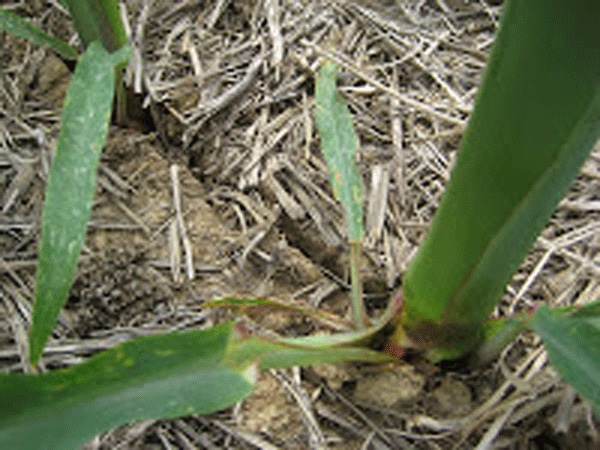May 3, 2013

The wet weather and calendar increase the urge to get back into the fields earlier.
Getting into the field "one day too soon" can result in sidewall compaction and/or surface compaction that will put the corn crop further behind all season.
Most fields in Kentucky have multiple soil types and some slope. In these fields, the soils will dry out at different paces. A producer could plant a field and 60 percent is suitable while the remaining 40 percent is too wet. These fields are the most challenging.
In addition, all the equipment may be in one area and one field may be borderline wet while the others are in good shape. Most producers are going to plant the wet field and move to the next location.
Since many producers are going to get into some fields a little too wet, consider some following options (note: none of these are as ideal as waiting for better soil conditions, but we are being realistic):
1.) Back off the down pressure on the springs or air bags. Wet soils don't take as much down force to get the corn at the proper depth. Backing off the down pressure will lighten the pressure on the sidewall as well. The seeding depth needs to remain at about 1.5 to 2 inches deep for most soils. Anything shallower than that could cause rooting and lodging problems later.
2.) Consider using a spike-tooth closer. Spike-tooth closers will crumble the sidewall and reduce compaction, some. I have been to fields where the divets from the closers were visible 5 weeks later — and the corn was stunted. If the spike-tooth closer is making divets, then the field is way too wet to plant!
3) Reduce the closing wheel pressure. The closing wheels provide some pressure to close the seed furrow. This is necessary to insure good soil-to-seed contact. But, in wet fields, less closing wheel pressure is needed.
4.) Be sure that your tractor and implement tires are properly inflated. Tires at the wrong pressure can lead to more compaction and reduce fuel efficiency.
5.) Try reducing any extra weight on the planter. If you have fertilizer tanks or boxes on the planter, you might want to keep them empty in these wet fields.
No need to adust seeding rate
There most likely is no need to adjust corn seeding rate. "Mudding-in" is less than ideal, but a couple thousand extra seeds per acre most likely will not improve the odds of good emergence. (There is some evidence that in soybeans, increasing seeding rate by about 120,000 to about 200,000 seeds per acre could improve emergence in crusted soils.
But that is a different scenario.) If the conditions for corn emergence are poor, then an extra seeding rate probably will not help.
Be careful with vertical tillage and other implements used to "dry out" the soil. They may dry out the upper couple of inches, which will help with seed placement, but they also could cause compaction at the tillage depth/point of tool-soil contact.
As such, seeding could go very well, but the compaction just beneath the seed could hurt root development later. If mud is sticking to the units, then the compaction risk is real.
Any curved blade run at an angle (i.e. a disk) is at a higher risk for causing shear compaction at the blade tip than a unit that runs straight (or wavy) blades straight up and down and in line.
All implements run some risk of causing compaction. The key issues are the amount of down-pressure developed by the implement and the number of blades transmitting that pressure into the soil.
Minimize down-pressure by setting the implement to maintain the desired operating depth. Do not operate an implement ‘wheels up’, with the full weight of the implement riding the blades into the soil deeper than needed.
Finally, planting a wet field is done at your own risk. There are some very good logistical reasons as to why to mud-in fields. There are no good agronomic reasons to do so.
You may beat the odds and get a great stand of corn with limited to no problems from mudding-in corn. But, the odds favor problems occurring later in the season.
Be sure to scout these fields early to identify problems. Such problems could change how you manage the fields (and market your crops) later in the season.
You might also like
2013 upland cotton loan chart now available
Corn market enters 2013 production season in bearish mood
Specialty crops take center stage at farm bill hearing
Conservation Stewardship Program applications due by May 31
You May Also Like




